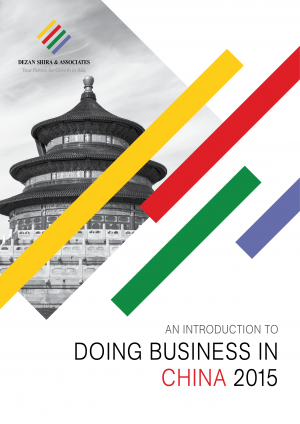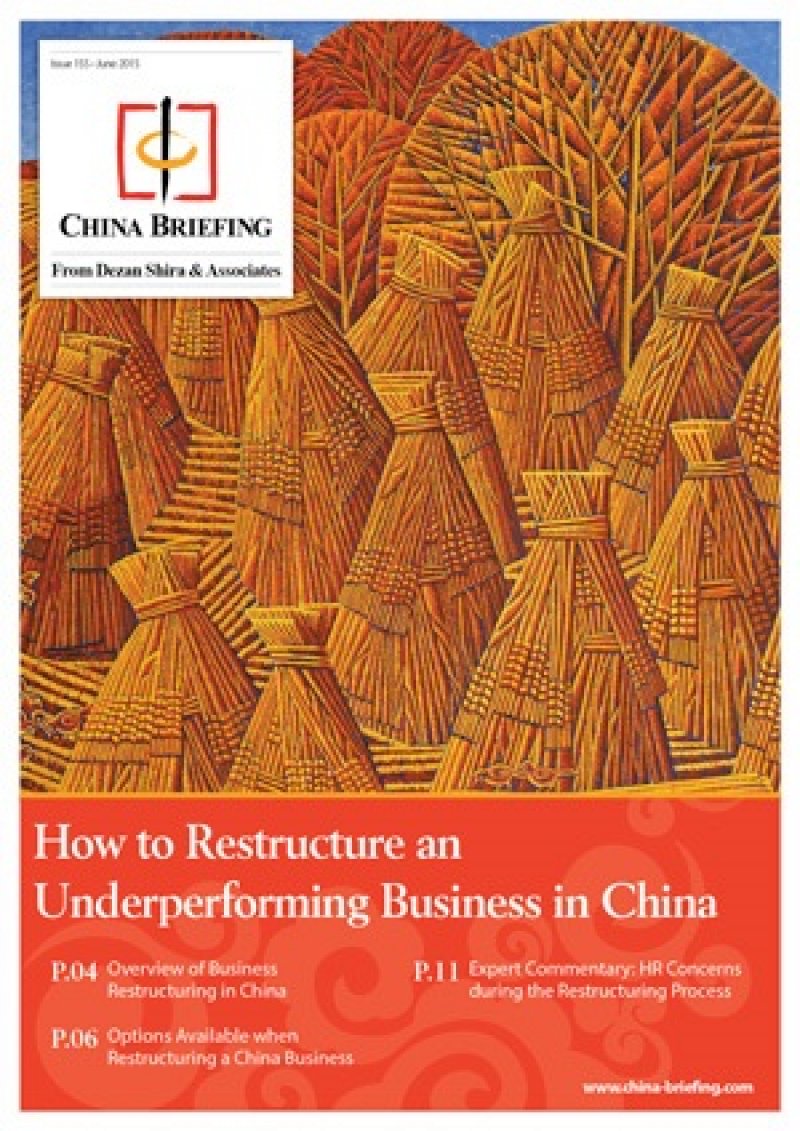“Old China” Vs. “New China” – The Importance of Understanding Change in the Middle Kingdom
Op/ed by Daniel R. Joseph
More than 400 million Chinese people moved from farms to the cities in the three decades ending in 2010. By 2010, roughly 400 million Chinese had also connected to the Internet. Among developed countries, those two major societal developments—urbanization and digitalization—were separated by at least 100 years. In China, they are happening almost simultaneously.
China is changing. Not as quickly as some people think, but more quickly than most could have imagined. The example above is one of my favorites because it is so dramatic. But there are no shortages of other examples—like the skylines of most major cities. Or the way in which cars now seem to outnumber bikes. Or how China was a completely closed society 35 years ago and now, every year, more than 100 million Chinese travel abroad and more than 100 million foreigners visit China.
Of course, all of this change is primarily a result of China’s 30+ years of exceptional economic growth. You certainly don’t need me to tell you that China is growing. The point I’m trying to make is a bit more subtle and often overlooked. The change that we see on the surface, the change that is related to an increase in material prosperity, is a result of changes that are occurring below the surface in China.
There are differences in China’s “local conditions”, primarily its economic structure, business environment, and culture, that make China challenging to foreign companies. It is changes in these same variables that are driving the change in material prosperity in China. These variables are changing because of China’s transition from communism to capitalism which, in the end, will fundamentally transform the lives of the Chinese people and the entire fabric of Chinese society.
![]() RELATED: Business Advisory Services from Dezan Shira & Associates
RELATED: Business Advisory Services from Dezan Shira & Associates
Change has created prosperity for China and opportunity for business. But change also creates confusion. More specifically, change makes China harder to understand because change makes China a moving target. You have to make sure you understand China as it is now, not as it was, and your understanding of China should probably anticipate how it will be in the not-too-distant future.
Adding to the confusion is the fact China is changing unevenly across sectors, regions, and many other aspects of the economy and society. In other words, some aspects of China are changing faster than others which means if you’re in one sector/region of China (for example, energy or Western China) it will have a very different feel than another sector/region (business services or Eastern China). The example below helps illustrate why this is important.
I was talking to the CFO of a middle market American company, along with one of their key employees from China. They were having problems with their Chinese partner in a joint venture they had formed a few years earlier. The JV was not performing well. They had cycled through multiple general managers and were now having trouble agreeing on a new one. The Chinese side seemed to have very different criterion for what a good GM would do. Our discussion eventually got to the point where the Chinese staffer made the comment that the partners were “old-style” Chinese. I thought I knew what she meant, but I asked her to elaborate nonetheless. “Everything for them is guanxi (personal relationships) and low cost. That’s how they do business. That’s all that is important to them. They aren’t interested in technology or anything like that.”
I love this story because it illustrates the concept of “Old China” vs. “New China.” Parts of China are very “Old China,” parts are very “New China,” and most everything is somewhere in-between. Whether you are formulating a strategy for China, selecting a partner, managing staff, or doing almost anything else a business does, it is important that you understand exactly where along the “Old China – New China” spectrum you are operating. This applies to economic sectors, markets, suppliers, customers, agents, managers, staffers, and just about everything else that relates to business. The company in my example didn’t realize it was partnering with “Old China.” It’s a shame they didn’t hire that Chinese woman before they formed the joint venture.
![]() RELATED: Is China Getting More Difficult? Common Problems that Foreign Companies will Encounter
RELATED: Is China Getting More Difficult? Common Problems that Foreign Companies will Encounter
Understanding “Old China vs. New China” is critical to managing well in China. In closing, it is also worth noting that change also plays a huge role in the controversies and debates that are constantly swirling around China. Relative to so many issues, whether a person has a favorable or unfavorable view of China often comes down to how much emphasis they place on how China is changing. The China haters or doubters tend to focus almost exclusively on Old China while the other side will focus on New China, or at least how China is progressing towards New China. As long as China keeps changing, which will only happen if that transition from communism to capitalism continues, then the China optimists will be right. If not, the doubters will win the day.
|
Asia Briefing Ltd. is a subsidiary of Dezan Shira & Associates. Dezan Shira is a specialist foreign direct investment practice, providing corporate establishment, business advisory, tax advisory and compliance, accounting, payroll, due diligence and financial review services to multinationals investing in China, Hong Kong, India, Vietnam, Singapore and the rest of ASEAN. For further information, please email china@dezshira.com or visit www.dezshira.com. Stay up to date with the latest business and investment trends in Asia by subscribing to our complimentary update service featuring news, commentary and regulatory insight. |
![]()
How to Restructure an Underperforming Business in China
In this issue of China Briefing magazine, we explore the options that are available to foreign firms looking to restructure or close their operations in China. We begin with an overview of what restructuring an unprofitable business in China might entail, and then take an in-depth look at the way in which a foreign company can go about the restructuring process. Finally, we highlight some of the key HR concerns associated with restructuring a China business.
 China Investment Roadmap: the Commercial Real Estate Sector
China Investment Roadmap: the Commercial Real Estate Sector
In this issue of China Briefing, we explore the latest trends in commercial real estate in China, and discuss how foreign companies can benefit from China’s massive construction boom. We provide a guide to how firms can sell construction materials in China, and finally detail how foreign architects can most effectively enter and take advantage of China’s rapid urbanization.
 An Introduction to Doing Business in China 2015
An Introduction to Doing Business in China 2015
Doing Business in China 2015 is designed to introduce the fundamentals of investing in China. Compiled by the professionals at Dezan Shira & Associates, this comprehensive guide is ideal not only for businesses looking to enter the Chinese market, but also for companies that already have a presence here and want to keep up-to-date with the most recent and relevant policy changes.
- Previous Article China Outbound: Forecasts for 2016, Transfer Pricing Rules in ASEAN Nations
- Next Article China Market Watch: China GDP Growth, Drug Pricing Reform and E-Commerce Zones










